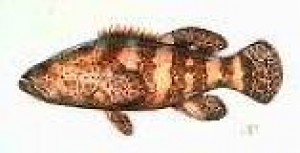Jew Jaws
The silence is profound. I look around the table at the other nine people and I wonder if they feel it, too. Are they impatiently waiting to be able to resume the conversation? Are they just going through the motions of the ritual, having done it so many, many times in their lives that its original meaning – there should be no interruption between the blessing made for washing the hands and the first bite of food – has largely been forgotten?
During the silence, our host cuts the challah bread while his wife mimes to him to place the bread on a plate and to slice more. (Actually, I think she muttered a little, breaking the silence, and I have to stop myself from being judgmental.) The bread is passed around and as soon as we take our first bite, we talk. And boy, do we ever talk!
It’s a normal Friday night dinner at a friend’s apartment here on the Upper West Side. Some of the people I know, others I’m introduced to, but to hear how easily we hop from subject to subject, how we debate, how we show off what we know or what we pretend to know, how we enthusiastically enter into controversial, sensitive subjects usually left alone at non-Jewish tables, you would swear that we’re cousins who are catching up with one another.
We talk about the weather, a big conversation on the Upper West Side on this Friday of the big snowstorm, not least because it knocked out parts of the eruv, the symbolic enclosure that exists in Orthodox neighborhoods and enables Jews to be able to carry things without abrogating Jewish law. The eruv is comprised of almost-invisible wires that are attached to utility poles throughout the Upper West Side, and though it’s quite a stretch to view the wires as “doors” or “walls,” technically these wires satisfy Jewish law that you can only carry things on the Sabbath if you are within your own courtyard. With no eruv, you can’t carry a child, push a child in a stroller, nor bring along a pair of shoes to change into this evening, and so we’ve left our boots in the hallway and are sitting around barefoot, which lends an even greater sense of intimacy to our gathering.
I mention that someone had made a snow sculpture of a huge man seated on a bench on 83rd and Broadway, and that leads to a conversation about art. The man seated to my right, turns out, is an artist, and since our hostess is an art historian and my husband an avid art collector, the question of what is art and who determines what art is and is folk art really art and what about the Barnes Museum, and has anyone been to the latest Guggenheim show which consists basically of kids accosting visitors and asking them questions, no art on the walls at all, are volleyed back and forth, so fast and furious that one could get whiplash.
My table mate tells us about going to Florida and seeing a sign that said “Jewfish Creek.” He was outraged and had his picture taken in front of the sign. “Did you think it was anti-Semitic?” I ask him. “I don’t know what it was, but it was weird.” “Maybe there are fish named Jewfish?” I suggest. “But why are they called Jewfish? Because they have a big mouth? They’re greedy?” (I later looked up Jewfish and discovered that a few theories exist as to how it got its name: it has scales and fins, so is kosher, and therefore a “Jewfish.” Or, the word might have originated as “jawfish”, because of its big mouth; over time, the southern accent turned it into “Jewfish.”)
In a temporary lull of conversation (about 20 seconds), our host offers his thoughts about the Torah portion of the week, the section of the Torah that will be read in the synagogue on Saturday. The portion has to do with a priest’s clothing, and that has him thinking about clothing in the Bible and how clothing indicates one’s status. For example, with Joseph, his coat of many colors seemed to elevate him above his brothers and caused them to be jealous of him, but when Pothiphar’s wife tore at Joseph’s mantle trying to disrobe him, it ended up getting him in trouble with her husband and he was thrown in prison. There’s also the scene of King David dancing in the street, dressed in some kind of a tunic, which his wife, Tamar despises. When Mordechai dons sackcloth and ashes to impress upon his niece, Esther, that she has to do something to prevent all of the Jews from being killed, it’s his clothing that activates her into taking action. Clothing can transform you, it can build you up, take you down, and it can serve as an instrument of change.
It’s a tradition in many Orthodox homes to ponder and interpret the Torah portion of the week over Shabbat lunch or dinner, and it’s something I’ve always enjoyed and appreciated. How many ways can we twist the Bible, turn it, look at it, reflect on it, and find something in those ancient words that are relevant for us today, as if God were still speaking to us using those exact same words as a medium? These Torah discussions tend to be rather intellectual, almost as if we were analyzing Shakespeare, not the revealed word of God. If this were a Christian table, the conclusion drawn from such a passage would probably take a different tact. Perhaps that God knows who you are, no matter what you wear, for God sees past the external.
Is it possible for this Shabbat dinner to end without some reference to Israel? No, I didn’t think so. The January assassination of the Hamas leader, Mahmoud Al-Mabhuh, in Dubai, perhaps by the Mossad, is still being debated. Altogether, twenty six men and women with fake, dual passports converged on Dubai and took this guy out. “It’s like a joke. Why does it take 26 Jews to change a lightbulb?” says our host’s son. The consensus around our table is that it’s probably the work of the Mossad, since Mabhuh was supposedly organizing weapons from Iran to the Gaza Strip, and also, the passports stolen were of Israeli citizens who have both Israeli and European or Australian citizenship. But why 26, we want to know? How is it that they left so clearly visible a trail? Nobody would dispute that the guy needed to be taken out. Personally, I wish the Israelis had been more like the eruv – undetectable, something our non-Jewish neighbors don’t even know about, but something that is vital for the Jewish community to thrive.
It’s a magical space, Shabbat dinner, a safety zone, a kind of spiritual eruv. Here, we all have a dual passport – we’re both American and Jewish and so we can talk freely about everything from the Holocaust, Israel and the Bible to art, the stock market and the crazy squirrels in Central Park.
As much as I love the silence in the pause between washing our hands and eating the bread, it’s much more fun, always enlightening, and never dull, jawing with Jews.
![[the current issue of ZEEK]](../../image/2/100/0/5/uploads/leftistethicistgraphic-52842c6a.png)
- 5000 Pages of Zeek
- Founded in 2001, Zeek was the first Jewish online magazine, and we have over 5000 pages online to prove it, all available free of charge. Read more in the Archive.
More articles by
Angela Himsel
More articles in
Life and Action
- Purim’s Power: Despite the Consequences –The Jewish Push for LGBT Rights, Part 3
- Love Sustains: How My Everyday Practices Make My Everyday Activism Possible
- Ten Things You Should Know About ZEEK & Why We Need You Now
- A ZEEK Hanukkah Roundup: Act, Fry, Give, Sing, Laugh, Reflect, Plan Your Power, Read
- Call for Submissions! Write about Resistance!



